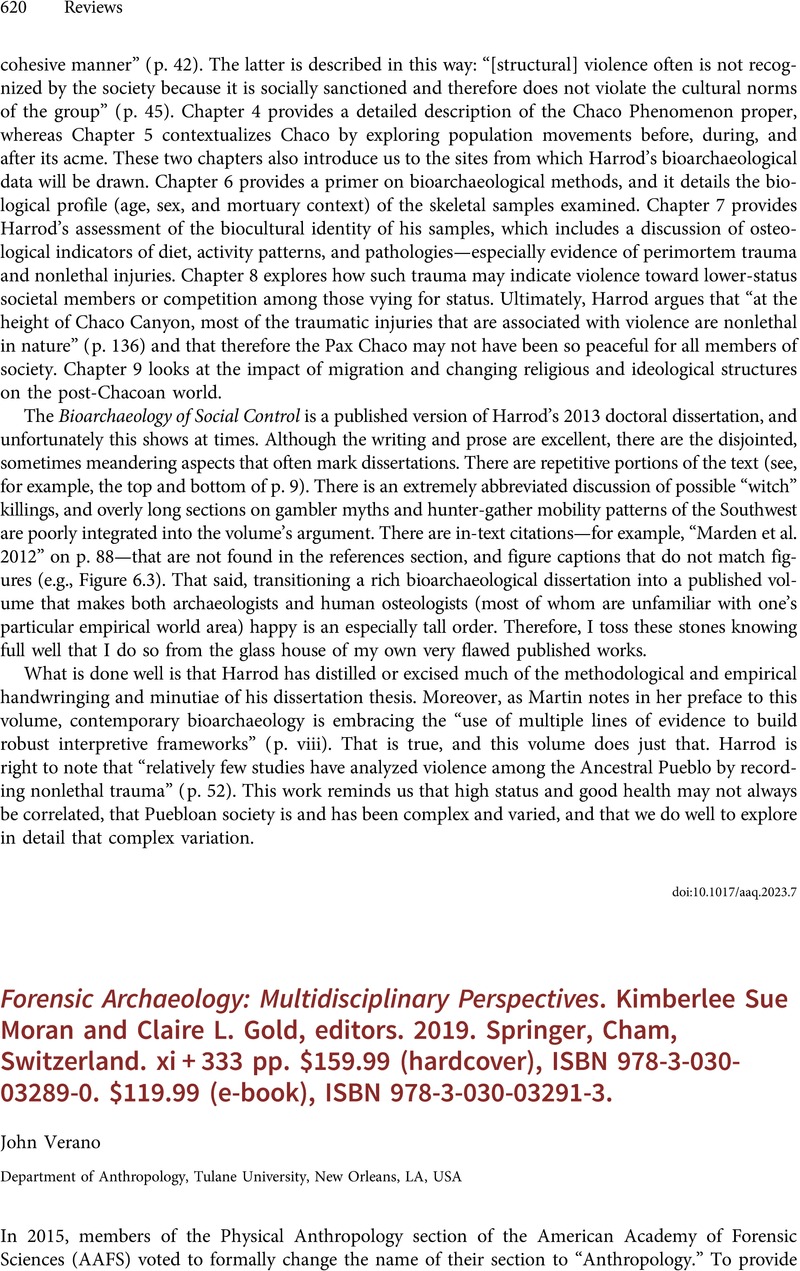No CrossRef data available.
Article contents
Forensic Archaeology: Multidisciplinary Perspectives. Kimberlee Sue Moran and Claire L. Gold, editors. 2019. Springer, Cham, Switzerland. xi + 333 pp. $159.99 (hardcover), ISBN 978-3-030-03289-0. $119.99 (e-book), ISBN 978-3-030-03291-3.
Review products
Forensic Archaeology: Multidisciplinary Perspectives. Kimberlee Sue Moran and Claire L. Gold, editors. 2019. Springer, Cham, Switzerland. xi + 333 pp. $159.99 (hardcover), ISBN 978-3-030-03289-0. $119.99 (e-book), ISBN 978-3-030-03291-3.
Published online by Cambridge University Press: 29 August 2023
Abstract
An abstract is not available for this content so a preview has been provided. Please use the Get access link above for information on how to access this content.

- Type
- Review
- Information
- Copyright
- Copyright © The Author(s), 2023. Published by Cambridge University Press on behalf of the Society for American Archaeology


